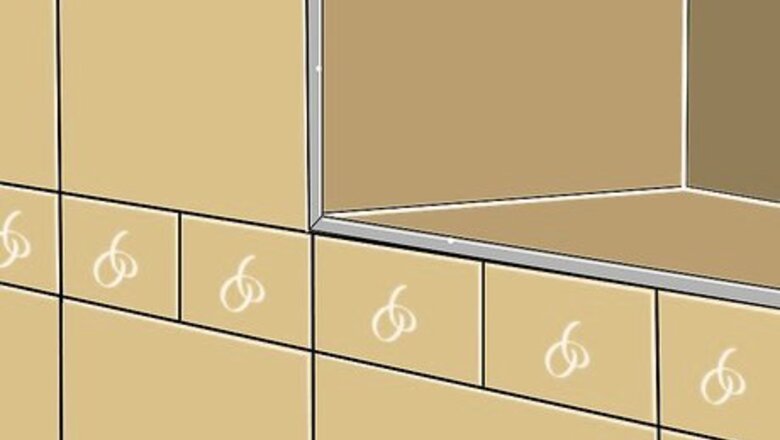
views
Choosing, Buying, and Installing Trims
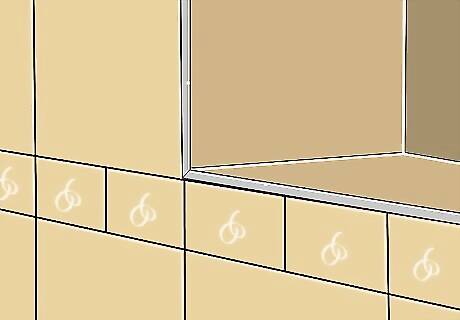
Decide what sort of trim you want. For a seamless look, match the trim to the rest of your tiles. For example, if you used white porcelain tiles, get white porcelain bullnose tiles. If you want something bolder, try tiles in a contrasting color or a different material, such as metal or wood. Caulking around the edges is another option. Learn more about it here. For more ideas on trims, click here.
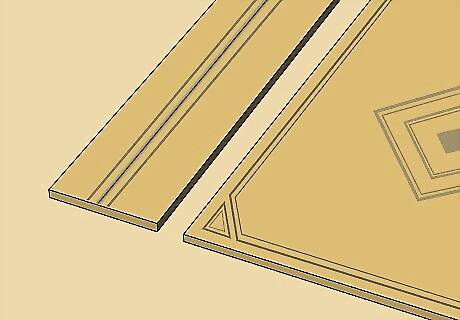
Make sure that the thickness of your trim matches the tiles. You almost always want the trim to be the same thickness as your tiles. The one exception to this are rail liners and moldings, which are supposed to be raised. Use a ruler to measure your tile's thickness in inches and/or millimeters. If you can't find trim tiles in the right thickness, try to special order them, or use an alternative, such as rail liners.
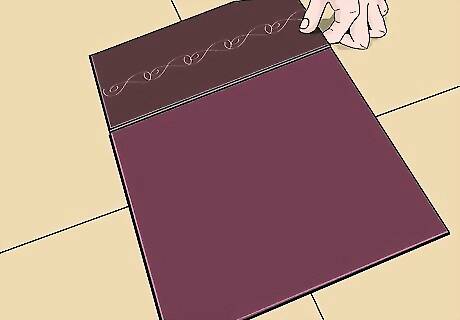
Test how the trim looks before making any commitments. Bring your tile to the store, and hold it up against the trim pieces that interest you. If you are ordering online, see if the shop offers free samples. If the trim does work out, place your order, and buy however many you need for the project.
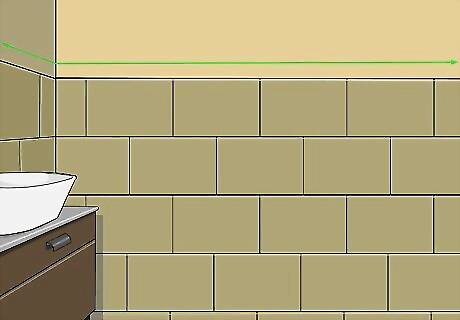
Figure out how much many trim tiles you need. If the trim tiles are the same length as the edge tiles, count the number of tiles along the edge, then buy that many trim tiles. If your trim tiles are larger or smaller than the tiles along your edge, measure the edge of your tiled surface, then divide that number by the width of your desired trim tile. For example: The edge you will be trimming is 96 inches long. Your desired trim tiles are 4 inches long. 96 divided by 4 = 24 tiles. If the number is not a whole number (i.e. 24.5), round up.
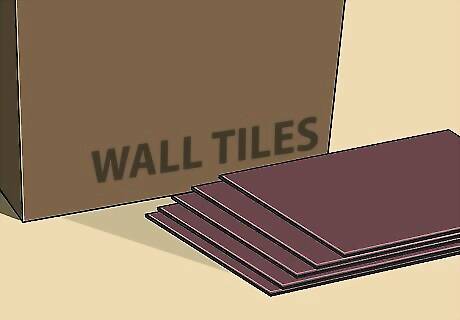
Buy extra trim tiles when making your purchase. Tiles may break during the installation process. Save yourself some trouble, and buy a few more tiles than you actually need for your project. If you end up with tiles left over at the end of your project, you can return them or save them for repairs.

Skip the trim if you are using glass tiles to save time and money. Most glass tiles will have a cut and an uncut edge. When you are installing glass tiles, position them so that the cut edges are touching each other or a cabinet. Leave the smooth, uncut edges on the outside for a natural trim.
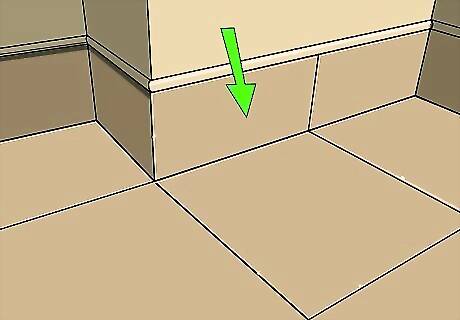
Leave room for the trim when installing your tiles. This is especially important if you are installing tiles that have something next to or above them, such as a kitchen backsplash beneath a cabinet or window sill. Start at the bottom of your project and work your way up. This way, if the last row of tiles is too tall, you will be able to cut them shorter. If you are working on a counter, start on the side that touches the wall instead.
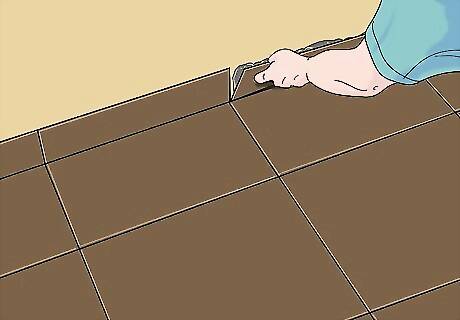
Install the trim last, after you have finished grouting your tiles. Prepare the grout according to the instructions on the package. Secure the trim pieces to your wall or counter with tile glue or grout. Fill the spaces between the tiles with more grout, then wipe the excess grout off with a damp sponge. Use the same method to install your trim tiles as you did your other tiles. You should use the same type of grout that you used on the rest of your project so that everything matches.
Working with Your Existing Tiles
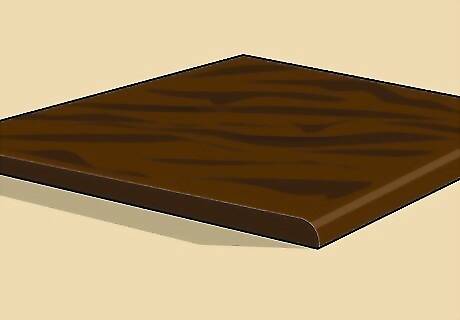
Grind natural stone or porcelain tiles if you don't want to buy trims. If you used natural stone or porcelain tiles for your project, you may not have to buy a special trim. Before you install these tiles along the edge, commission a trained professional to grind your tiles into a bullnose. You can try to do it yourself, but you will need to purchase special equipment and make room for mistakes. Examples of natural stone include granite, marble, and travertine. A bullnose is where the sharp edge has been ground into a smooth, curved edge.
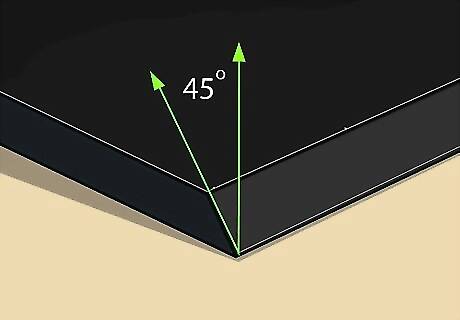
Miter the edges of your edge tiles if you don't want to buy trims. This is another alternative to buying special trims, but you have to do it before you install your tile edges. Keep in mind that this option is not very durable, so it is not recommended for surfaces that will see heavy use, such as stairs. Simply cut sides of the edge tiles with a tile saw. Some tile saws even have a beveled edge, which will make creating the angle even easier. A mitered edge is where the sharp edge has been ground at a 45-degree slant.
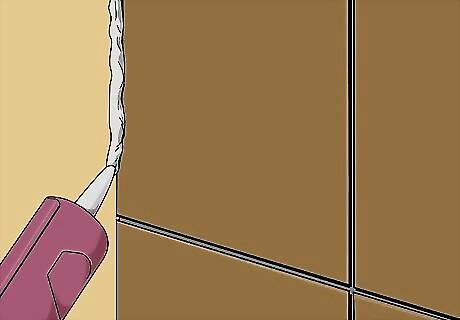
Caulk the edges if you want to keep things simple. This is a third alternative to buying trim tiles. It works best on tiles that have smooth, finished edges, such as mosaic and tumbled stone. Some porcelain tiles may also work. Once you finish grouting the tiles, use a caulking gun or syringe to apply a thin line of caulk to the outside edges of your tiled surface. Caulk is great for bathrooms, where a water-tight seal is important. This method is not recommended for tiles with raw, coarse, or unfinished edges.
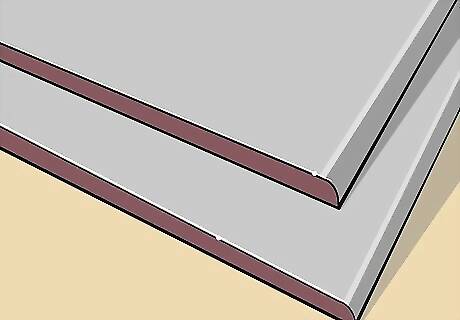
Get raw edges of tiles glazed in a different color to add contrast. This works best on porcelain tiles so that the finishes will match. You will have to commission someone to do this for you, unless you have access to ceramic glaze and a kiln. Painting the tiles with regular acrylic or latex paint is not recommended because it is not durable.
Using Cap, Trim, and Liner Tiles
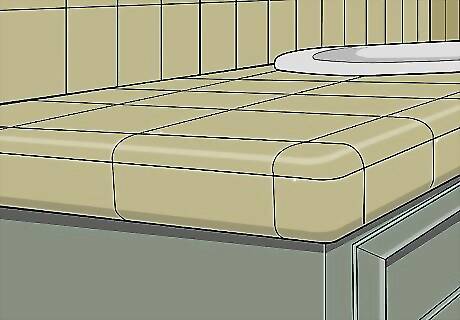
Finish edges and corners on counters with V-cap tiles. They are also called "sink caps," and are used on kitchen and bathroom counters. They are L-shaped, so they cover both the top and side of the counter edge. Some places sell even smaller ones made specifically for corners. If you are going to be using these near a sink, get the kind with a raised edge. This will keep the water from dripping onto the floor. Match the material to the rest of the tiles on the counter. You can use a matching color, or a different color.
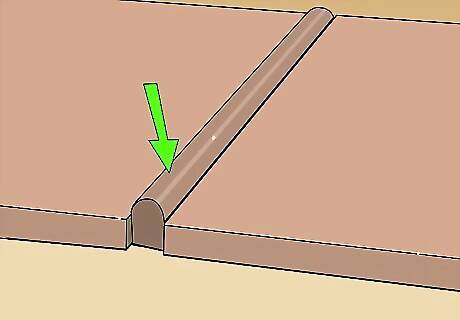
Edge walls or counters with bar liners if you want to add texture. These tiles are narrow, with a rounded top, and come in smooth finish, textured, and molded finishes. They are a great way to trim a tiled shower wall or backsplash. Match the material to the rest of the tiles. Use a matching or a coordinating color. These may also be called "pencil liners."
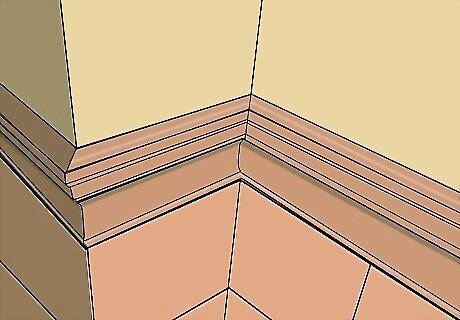
Use rail moldings to transition between different materials. Rail moldings are thin, decorative tiles made from natural stone or porcelain. They are molded on 1 side, similar to crown moldings on a ceiling. Use them as a border between a tiled surface and a wall, or between 2 different types of tile. Match the rail molding to the surrounding ones, or use a contrasting one for a more unique finish. Some places sell rail moldings as "cap moldings" or "chair rails."
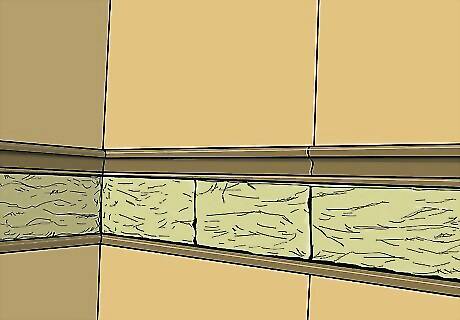
Use natural stone as a rustic decorative trim. You can use these even if the rest of your tiles are made from a different material. Use a coordinating color and texture to really make them stand out. You will need to grind the edges of natural stone tiles into a bullnose yourself.
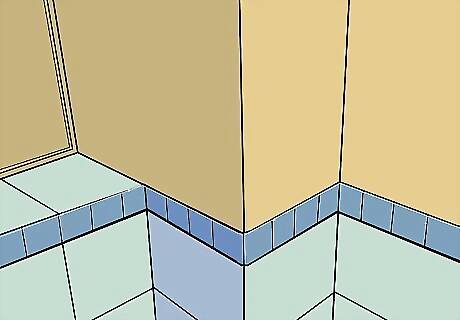
Edge tiled walls with glass tiles for an elegant look. Glass tiles typically have a smooth, uncut edge and a sharp, cut edge. Orient the tiles so that the smooth edge is on the outside of your tiled project. This way, the rough, cut edges will be touching one another.
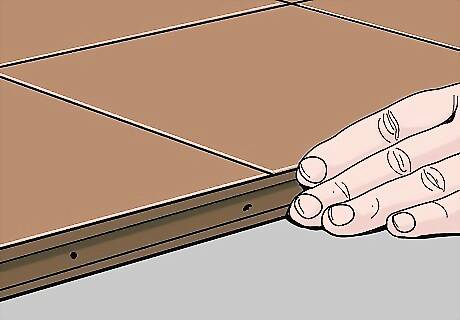
Use a wooden trim if you want a more unique look. They are also a great option if you can't find matching V-caps or bullnose tiles to finish the edges with. Separate the wood trim from the tiles with caulk that matches the grout. Use nails, screws, or plugs to secure the wood trim to the counter.
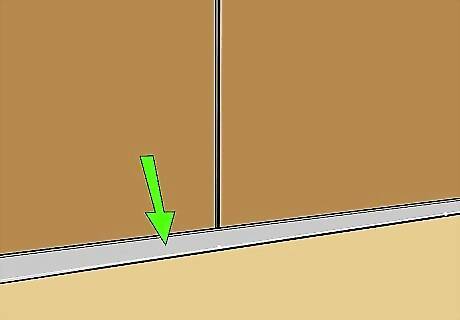
Edge tiles with metal trim for a contemporary finish. You can use them on all sorts of tiled surfaces, including counters, showers, floors, walls, and stairs. They are a great way to transition between tiled and non tiled surfaces. Make sure that you coordinate the metal finish to the surrounding metals, however. For example, if your shower has a polished chrome showerhead, use polished chrome edging. Metal edges come in different shapes. Use L-shaped ones for a square finish, or rounded/bullnose ones for a curved finish. Metal edges come in different textures, such as smooth, speckled, and brushed.











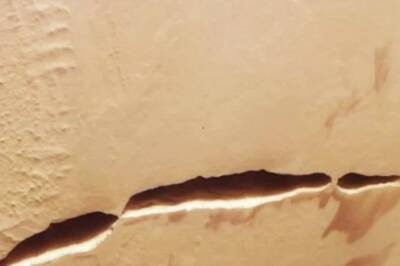




Comments
0 comment